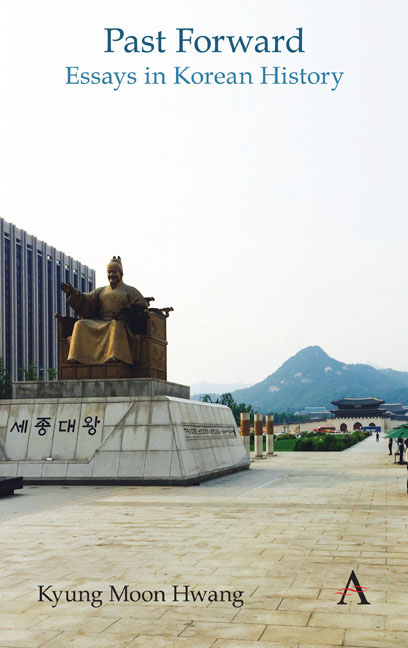Book contents
- Frontmatter
- Contents
- List of Figures
- Foreword
- Chronologies of Korean History
- Themes
- Acknowledgments
- Note on Romanization and Spelling
- Part I Circulating History
- Part II Durable Traditions
- Part III Ancient Remains
- Part IV Dynastic Depths
- Part V Modern Origins
- Part VI Challenges of Nationhood
- 30 Korea's Past in Light of Brexit
- 31 Openness and Exclusion
- 32 The North Korean View of History
- 33 Another Way to View National Division
- 34 The First National Assembly Elections
- 35 Who Started the Korean War?
- 36 Textbooks and Competing Nationalist Histories
- 37 The Complexities of Memorial Day
- 38 Adoption's Spotlight on Korean History
- 39 Questioning Monuments
- 40 Taking Ownership of the Past
- Part VII History Makers
- Part VIII External Presences
- Part IX Trials of Modernization
- Part X Gripped by the Past
- Index
39 - Questioning Monuments
from Part VI - Challenges of Nationhood
- Frontmatter
- Contents
- List of Figures
- Foreword
- Chronologies of Korean History
- Themes
- Acknowledgments
- Note on Romanization and Spelling
- Part I Circulating History
- Part II Durable Traditions
- Part III Ancient Remains
- Part IV Dynastic Depths
- Part V Modern Origins
- Part VI Challenges of Nationhood
- 30 Korea's Past in Light of Brexit
- 31 Openness and Exclusion
- 32 The North Korean View of History
- 33 Another Way to View National Division
- 34 The First National Assembly Elections
- 35 Who Started the Korean War?
- 36 Textbooks and Competing Nationalist Histories
- 37 The Complexities of Memorial Day
- 38 Adoption's Spotlight on Korean History
- 39 Questioning Monuments
- 40 Taking Ownership of the Past
- Part VII History Makers
- Part VIII External Presences
- Part IX Trials of Modernization
- Part X Gripped by the Past
- Index
Summary
Made of stone or metal, and often larger than life, monuments are meant to be permanent. The most celebrated ones are public memorials, built by governments and placed in communal spaces such as parks or in front of courthouses, presidential mansions, or other official buildings. Indeed the most massive, elaborate, or decorative government buildings act as monuments themselves.
This should not mean, however, that monuments are held as eternally sacred symbols. They reflect the particular historical circumstances of their creation, and their meanings can change over time. In the United States, this theme has come to the forefront amid ongoing, passionate conflicts over the dozens of statues honoring the Confederate States of America, the name for those territories that seceded from the United States to start the American Civil War in 1861.
Although a shocking number of Americans still refuse to acknowledge it, their civil war was undeniably fought over slavery. Those who insist that the war was actually fought over “states’ rights” and the southern way of life seem to miss the point that what the Confederacy defended was the states’ rights to keep and even expand slavery, which formed the basis of the South's way of life. Therefore, today's indignant protectors of such statues are upholding none other than the heritage of white supremacy, racial segregation and forced labor, which cannot be separated from anything else that distinguished the southern lifestyle. In fact the Confederate leaders themselves said so, explicitly, to justify their rebellion back in the 1860s.
Today's defenders of Confederate symbols also seem unable to recognize that as time passes, societies and worldviews change with new information and understanding. Just as we no longer can accept slavery and racial discrimination, it is difficult to accept public memorials to ideas and people behind the violence of slave labor, ethnic cleansing and systematic rape. (If we are stuck, we can always apply the Hitler test: Could anyone justify keeping an old statue of the Nazi leader for the sake of historical preservation?)
So look for further battles to come, as concerned Americans challenge more monuments and statues, not only of those southern leaders who promoted slavery and discrimination, but even of older, iconic figures like Christopher Columbus, the Spanish seafarer whose voyage in 1492 changed the world.
- Type
- Chapter
- Information
- Past ForwardEssays in Korean History, pp. 113 - 116Publisher: Anthem PressPrint publication year: 2019



